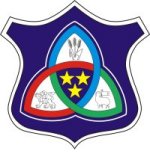HISTORY OF THE VILLAGE FEKETIĆ


The settlement of Feketegyház was first mentioned in 1465 as the estate of the Maróti Family. It survived even the Mohács Rout.
The next documented data about the village is from the period between 1580 and 1590 when the settlement had 28 tax-paying houses at the south slopes of the Telecska Hills by the Krivaja River. Later there was a change in the population and under the Ottoman rule the settlement was named Feketics, first mentioned in 1652. After the Turkish devastation the village was deserted and became part of the Kula Estate. Following the Battle at Senta in 1699 when the Turks were expelled from the territory of Bacska, there were only 55-60 inhabited settlements. The rare population consisted of Serbian frontiers.
Count Glassalkovics Antal initiated the idea of settling people into the region of Bacska already in 1720 but his idea were not supported. However, it helped Empress Maria Theresa to send German Catholics from the Rhone area, devoted to the Austria-Hungarian throne, to this region especially after her son, Franz Joseph II became the emperor. This is how the regions of Bacska and Banat got its first settlers. A legal act allowed the Protestant population to settle down in these areas and also promised them free houses, land, money and personal property. The new settlements grew quickly.
During the reign of the Hungarian King, Bela IV many kun tribes had come and settled in the territory of Hungary. Their descendants remained there even after the Rákóczi-uprising and some of them chose Kunhegyes to live in. Those who were left out from the Redemption of 1745 decided to use the opportunity of obtaining free land which was promised by the order of Franz Joseph II.
In 1785 they were granted the free movement to settle the plain of Feketity. 211 families came and settled near the place where Feketegyház had been once. Besides these families from Kunhegyes there were a few ones who came from Tiszabura.
They had the following conditions:
- they would receive land according to their material state and working abilities
- they would receive wood for house building
- they would not have to pay taxes for 3 years
- they would be lent maize and corn.
The settlers built their own houses being instructed by an engineer. There were wells in the village, one providing enough water for 10 houses. Around the village they had pasture land. They were all reformed Hungarians, their first minister came with them from Kunhegyes bringing the first church bell as well. Almost immediately they started with the religious education and building a church that stood at the location where the present Reformed Church stands. The first graveyard was used until 1836. It was on a hill and today this is where the primary school is located.
At beginning of the 1820's Schwab people started to move into the village from the neighbouring Szeghegy and slowly they made 1/3 of the total population.
The Hungarian Revolution of 1848/49 had tragic outcomes for the Hungarian population. In 1849, the Hungarian soldiers left this part of Bacska unprotected and the Hungarian population being afraid of the revenge had to flee on January 23rd ( the so called Mári-napi Flee). They fled to Kuskunhalas and Soltvadkert in Hungary. Those who stayed to protect the village were all massacred including the Reformed minister, József Berthidai Keresztes. The villagers dared to come back only after the peace-agreement of Vilagos and found a robbed and burnt village. It was a painful and hard time and they had to start rebuilding the village all over again.
Meanwhile, history recorded that one of the successful battles of the Revolution happened in this region circled by the villages of Feketehegy, Szeghegy and Kishegyes. The army of General Richard Guyon defeated the army of Jelusic, the viceroy of Croatia.
After World War I Feketic-Crno Brdo fell into the Serbian-Croation Kingdom. The schools which were managed by the Reformed Church were ceased. Following World War II another great change happened: the Schwab population was deported and Montenegrins were settled in.
József Kórizs Sr










